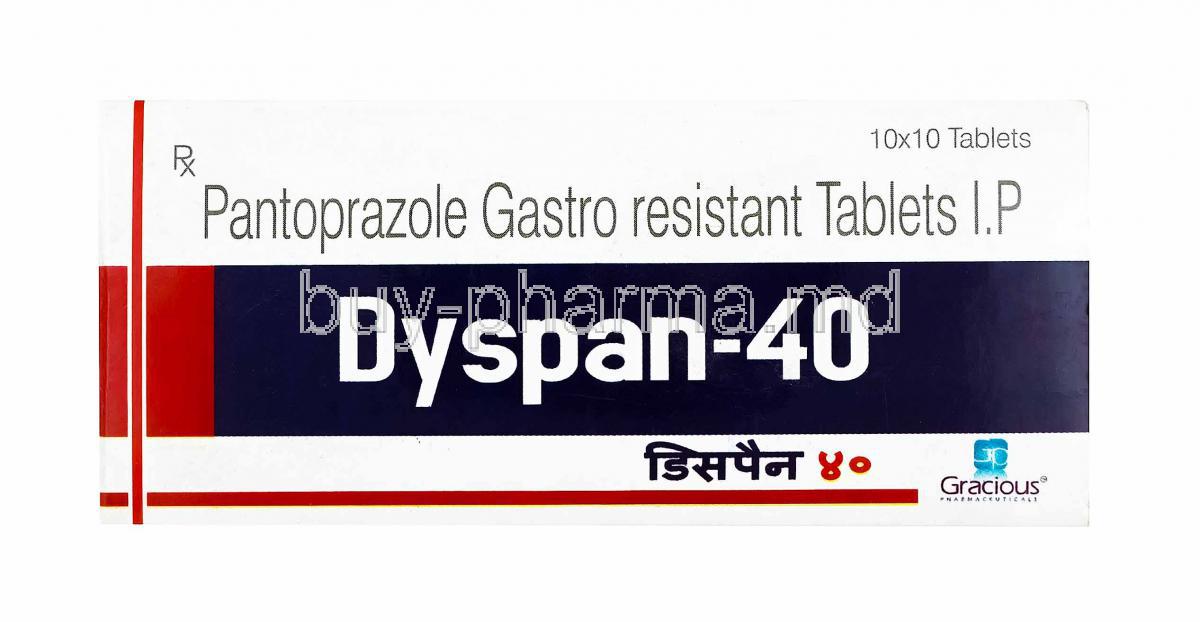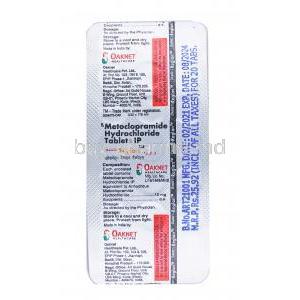Dyspan, Pantoprazole
- Introduction to Pantoprazole (Dyspan)
- Composition of Pantoprazole
- Mechanism of Action: How Pantoprazole Works
- Uses of Pantoprazole
- Off-Label Uses of Pantoprazole
- Dosage and Administration of Pantoprazole
- Side Effects of Pantoprazole
- Detailed Analysis of Common Side Effects
- Drug Interactions with Pantoprazole
- Warnings and Contraindications
- Special Precautions in Medication Administration
- Overdose Information
- Handling and Storage of Pantoprazole
- Careful Administration Practices
Introduction to Pantoprazole (Dyspan)
Pantoprazole, known as Dyspan in the market is a proton pump inhibitor (PPI) that has transformed the treatment of acid-related stomach issues. Its introduction brought an advancement in gastroenterological treatments offering relief and a fresh approach to managing disorders caused by excessive stomach acid production.
- Overview of Pantoprazole;Pantoprazole plays a role in treating conditions like gastroesophageal reflux disease (GERD), Zollinger Ellison syndrome and peptic ulcer disease by blocking the gastric proton pump and reducing stomach acid secretion effectively.
- Brief History and Development of the Drug; Pantoprazole was developed in the 1980s with the goal of enhancing its pharmacokinetic properties and safety compared to earlier proton pump inhibitors. Extensive research and trials confirmed its effectiveness leading to its approval, for global use.

Pantoprazole
Composition of Pantoprazole
The development of Pantoprazole showcases the advancements in pharmaceutical technology aiming to enhance effectiveness while minimizing potential side effects. Its formulation is carefully adjusted to improve the drugs stability and absorption rates.
- Key Components; Pantoprazole consists of pantoprazole sodium, a substance that helps selectively block the H+/K+ ATPase enzyme system on the gastric parietal cells secretory surface.
- Additional Ingredients and Composition Details; The tablets components, such, as sodium carbonate, mannitol and hydroxypropyl cellulose play vital roles in ensuring proper drug delivery and absorption by aiding in dissolution and stability.
Mechanism of Action: How Pantoprazole Works
The way Pantoprazole works is quite complex and interesting showing its importance as a treatment in controlling stomach acid levels.
- When it comes to how Pantoprazole works in the body; As a proton pump inhibitor Pantoprazole binds tightly to the proton pumps in the stomach lining specifically targeting the sulfhydryl group of the cysteine residue in the H+/K+ ATPase enzyme. This process effectively stops the stage in creating gastric acid.
- Impact on Stomach Acid Production; The level of inhibition varies based on dosage resulting in a decrease, in both natural and stimulated gastric acid production, which helps with treating acid related illnesses and offering relief from symptoms.
Uses of Pantoprazole
Pantoprazole, a medication that inhibits proton pumps plays a crucial role in treating various gastrointestinal issues caused by excessive stomach acid.
- It provides a treatment approach for handling conditions linked to the overproduction of gastric acid. Pantoprazole is approved for use, in a range of disorders showcasing its effectiveness and safety record.
Gastroesophageal Reflux Disease (GERD)
When treating gastroesophageal reflux disease GERD pantoprazole works by reducing stomach acid production easing heartburn symptoms and stopping stomach contents from flowing into the esophagus. This helps prevent harm to the esophagus caused by prolonged exposure, to stomach acid.
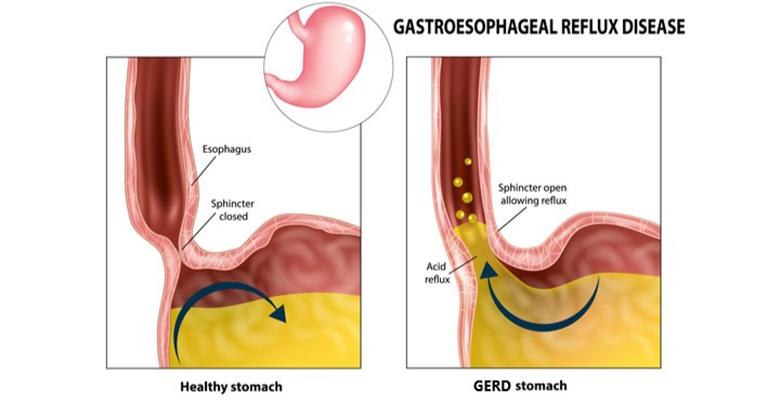
GERD
How long does it take for pantoprazole to work for acid reflux?
The time it takes for pantoprazole to start working can differ. You can usually expect relief, from symptoms within a few hours of taking it. However to get the results it's important to use it regularly as directed for several days.
Zollinger-Ellison Syndrome
Pantoprazole works well for treating Zollinger Ellison Syndrome, a rare condition that causes excessive production of stomach acid. It helps manage the symptoms and issues linked to this disorder by reducing the secretion of gastric acid.
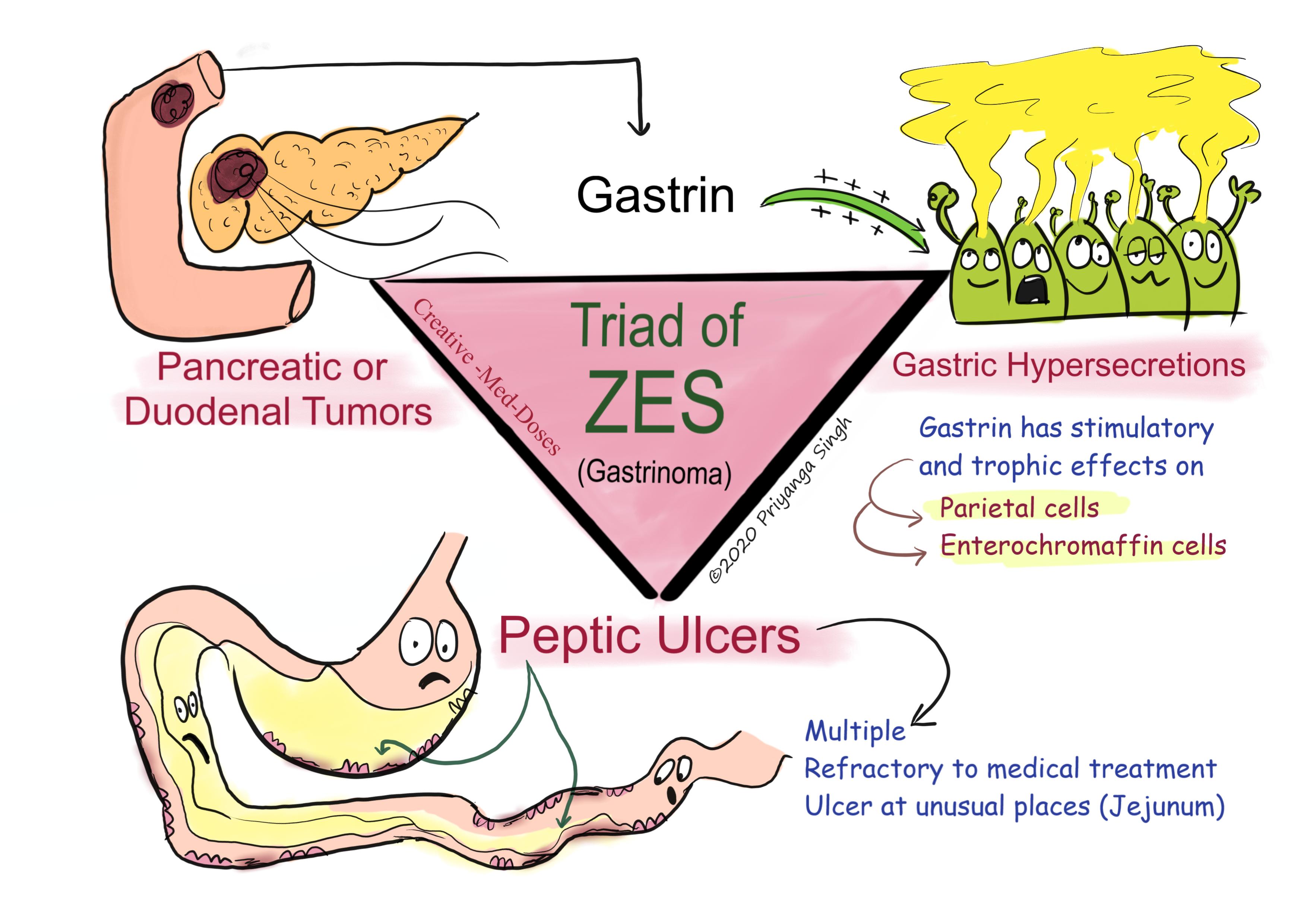
Zollinger Ellison Syndrome
Peptic Ulcer Disease
Peptic ulcer disease (PUD) is when ulcers form in the stomach and duodenum. Pantoprazole helps create a healing environment by decreasing stomach acid production, which aids in healing ulcers and provides relief from the pain often linked with PUD.
Off-Label Uses of Pantoprazole
Pantoprazole is commonly used to treat gastrointestinal issues but it also has a range of other medical uses, beyond its primary purpose.
Uncommon Applications in Medical Practice
Physicians frequently use pantoprazole for purposes that go beyond its approved indications to address challenging situations.
- Some notable examples include utilizing it for preventing stress ulcers in ill patients to lower the risk of gastrointestinal bleeding.
- Additionally it is utilized in managing reflux, a condition involving acid reflux affecting the throat and voice box even though it is not traditionally its main purpose.
- Furthermore pantoprazole aids, in treating eosinophilic esophagitis, a disorder hinting at a possible anti inflammatory function of the medication.

Eosinophilic esophagitis
Research-Based Emerging Uses
Recent research has shed light on new possibilities for the use of pantoprazole backed by strong scientific investigation.
- It shows promise in helping to manage the side effects of cancer therapy in easing mucositis in chemotherapy patients.
- Early studies suggest a role in treating exacerbations of chronic obstructive pulmonary disease (COPD) where acid reflux plays a part in respiratory issues.
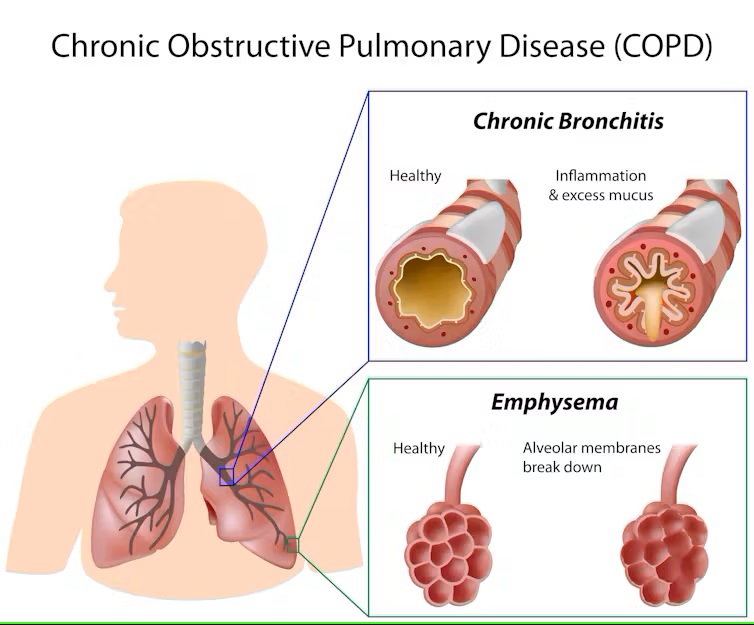
Chronic obstructive pulmonary disease (COPD)
- There is exploration into its ability to reduce secretions, in cystic fibrosis patients with the goal of improving digestive symptoms and overall nutritional well being.
These emerging applications of pantoprazole backed by research efforts could broaden its therapeutic scope highlighting its potential beyond traditional gastrointestinal uses.
Dosage and Administration of Pantoprazole
Pantoprazole is a medication utilized to treat various stomach related conditions. It is essential to ensure the dosage, for optimal results and safety.
Recommended Dosages for Different Conditions
The recommended amounts of pantoprazole can differ depending on the condition being addressed.
- For treating gastroesphageal reflux disease (GERD) the usual dose is 40 mg taken once a day for a period of, up to 8 weeks.
- When managing Zollinger Ellison Syndrome initial dosages may begin at 40 mg twice daily with adjustments made based on how the patient responds to treatment.
- In cases of ulcer disease the typical prescription is 40 mg taken once daily for a span of 4 to 8 weeks taking into account the seriousness of the condition and how well it responds to therapy.
Modifications in Dosage Based on Patient Condition
Some patient groups may need to have their dosage adjusted;
- People with liver issues should not take more than 20 mg of pantoprazole daily.
- Elderly patients or those, with kidney problems usually do not need dosage changes. It is recommended to monitor them clinically.
Methods of Administration
Pantoprazole comes in intravenous forms giving healthcare providers options based on the patients condition and symptom seriousness. The typical method is through delayed release tablets or granules, for intake while the intravenous option is preferred for patients who can't swallow tablets or when quick acid suppression is needed.
Why take pantoprazole first thing in the morning?
It's best to take pantoprazole in the morning for issues, like GERD to match the bodys natural acid production rhythms. Taking it before eating helps it absorb better and work effectively in reducing stomach acid production all day.
Can I take pantoprazole at night?
Pantoprazole is usually recommended to be taken in the morning. There may be instances where taking it at night is recommended, especially if nighttime symptoms are more prominent or if it fits better with the patients daily routine. It's important to consult with a healthcare provider to ensure the management of the condition.
Side Effects of Pantoprazole
Pantoprazole, similar to any medication may result in side effects that vary in severity from mild to serious. It is important to grasp these effects for management, in clinical settings.
Overview of Common and Rare Side Effects
Although pantoprazole is usually well tolerated patients could encounter unwanted effects.
- Typical side effects consist of headaches, diarrhea, nausea, vomiting, and stomach pain.
- On the otherhand uncommon side effects may involve severe conditions, like Stevens Johnson syndrome, kidney issues, and significant hypomagnesemia.
Does pantoprazole cause weight gain?
Using pantoprazole is generally not connected with weight gain. Research studies and reports after the drugs release do not consistently show a link between pantoprazole and notable weight changes. Nonetheless peoples reactions, to medication can differ.
Can pantoprazole cause anxiety?
Some individuals may experience anxiety as a side effect of taking pantoprazole. Although a few patients have noted heightened anxiety symptoms while using the medication such occurrences are sporadic and lack support from, in depth clinical studies.
Does pantoprazole cause cancer?
The prolonged utilization of pantoprazole has come under scrutiny regarding its association with gastric cancer, especially after the eradication of Helicobacter pylori.
Nonetheless existing data does not definitively prove a cause and effect connection, between pantoprazole and the onset of cancer.
Can pantoprazole cause constipation?
Constipation can occasionally occur as a side effect of taking pantoprazole. If patients encounter constipation they are typically recommended to make changes drink more water and stay active to help relieve the symptoms.
Managing Side Effects and Adverse Reactions
Managing the side effects linked to pantoprazole requires a few approaches;
- Making adjustments to the medication dosage or frequency with guidance from a healthcare provider can help alleviate side effects.
- Keeping lines of communication, with medical professionals ensures quick recognition and handling of any negative reactions.
- Implementing lifestyle changes like altering diet and increasing physical activity can also assist in managing and lessening the impact of side effects.
Patients should consult healthcare providers before modifying their medication routine or lifestyle to guarantee safety and effectiveness.
Detailed Analysis of Common Side Effects
Pantoprazole, often prescribed for issues related to acid is linked to various side effects that mainly impact the stomach and bodys metabolic functions.
Common Gastrointestinal Side Effects
- The possible stomach related issues associated with pantoprazole are nausea and vomiting which are usually not severe and short lived.
- Indigestion and gas can often be improved by making changes to ones diet.
- In severe cases there is a rare risk of gastric atrophy and the potential for Clostridioides difficile infection, in individuals who are more susceptible.
Potential Metabolic Disturbances
- Long term use of pantoprazole can lead to metabolic issues such as imbalances like hypomagnesemia and hypocalcemia especially in older individuals or those undergoing prolonged treatment.
- Additionally reduced gastric acidity from usage may affect the absorption of vitamin B12 potentially requiring supplementation, over an extended period.
Drug Interactions with Pantoprazole
When taking Pantoprazole it's important to be mindful of how it may interact with medications as this can impact both their effectiveness and the overall efficacy of the drug. Managing these interactions properly is key, to achieving therapeutic results.
Common and Significant Drug Interactions
Some important interactions to consider are; Decreased absorption of medications that need an environment like ketoconazole and itraconazole. Changes, in how the antiplatelet drug clopidogrel works, which require cautious co administration.
Impact on Absorption and Metabolism of Other Drugs
Pantoprazole might raise the acidity levels in the stomach affecting the way certain medications are absorbed. On the other hand it could also improve the absorption of medications such, as digoxin possibly causing harm if not closely watched.
Famotidine vs Pantoprazole
Famotidine and pantoprazole are both medications that help reduce stomach acid levels. Famotidine, classified as an H2 blocker acts quickly. Doesn't last as long, as pantoprazole, a proton pump inhibitor.
Pantoprazole vs Nexium
Nexium, with esomeprazole as its ingredient functions in a comparable way, to pantoprazole. Variances can be found in how they're metabolized and the particular isomer utilized in Nexium which could provide a slight advantage in addressing certain ailments.
Lansoprazole vs Pantoprazole
Lansoprazole and pantoprazole while similar in their effectiveness as proton pump inhibitors may impact how individual patients respond to them due to differences, in their pharmacokinetics.
Pantoprazole and Alcohol
It's best to steer off alcohol while taking pantoprazole since it can worsen the side effects, like feeling sick and dizzy.
Feeling dizzy after taking medicine with alcohol
Pantoprazole vs Omeprazole
Pantoprazole and Omeprazole of these drugs belong to the class of proton pump inhibitors. Are very good at decreasing the production of stomach acid. However there are variations in how well the body absorbs them and how long they remain active factors that could impact the decision, on which treatment to use.
Is Pantoprazole the Same as Omeprazole?
Even though pantoprazole and omeprazole are chemically alike they have chemical compositions that could impact how the body processes them potentially affecting their effectiveness and side effects.
Which is Safer: Pantoprazole or Omeprazole?
Both medications are typically considered safe. Its important to take into account individual patient characteristics, like liver health, current medical conditions and other medications being taken when deciding between pantoprazole and omeprazole. Treatment choices should be tailored to each patient to ensure safety and effectiveness are optimized.
Warnings and Contraindications
Pantoprazole is a treatment, for acid related issues but there are certain situations where it's not recommended or should be used carefully.
Conditions Where Pantoprazole Should Be Avoided
Individuals should avoid using Pantoprazole if they have allergies to any ingredients in the medication or substituted benzimidazoles. It's important to be cautious when prescribing this medication to patients with liver problems because there is a risk of the drug building up, in their system.
Risk Factors and Safety Profiles
Before starting pantoprazole it's important to take into account the patients health status and potential risks including a history of fractures related to osteoporosis.
- Pantoprazole could potentially raise the chances of hip, wrist, and spine fractures with prolonged usage or high doses.
- Also keep in mind conditions, like kidney disease or magnesium deficiency that could worsen with extended treatment.
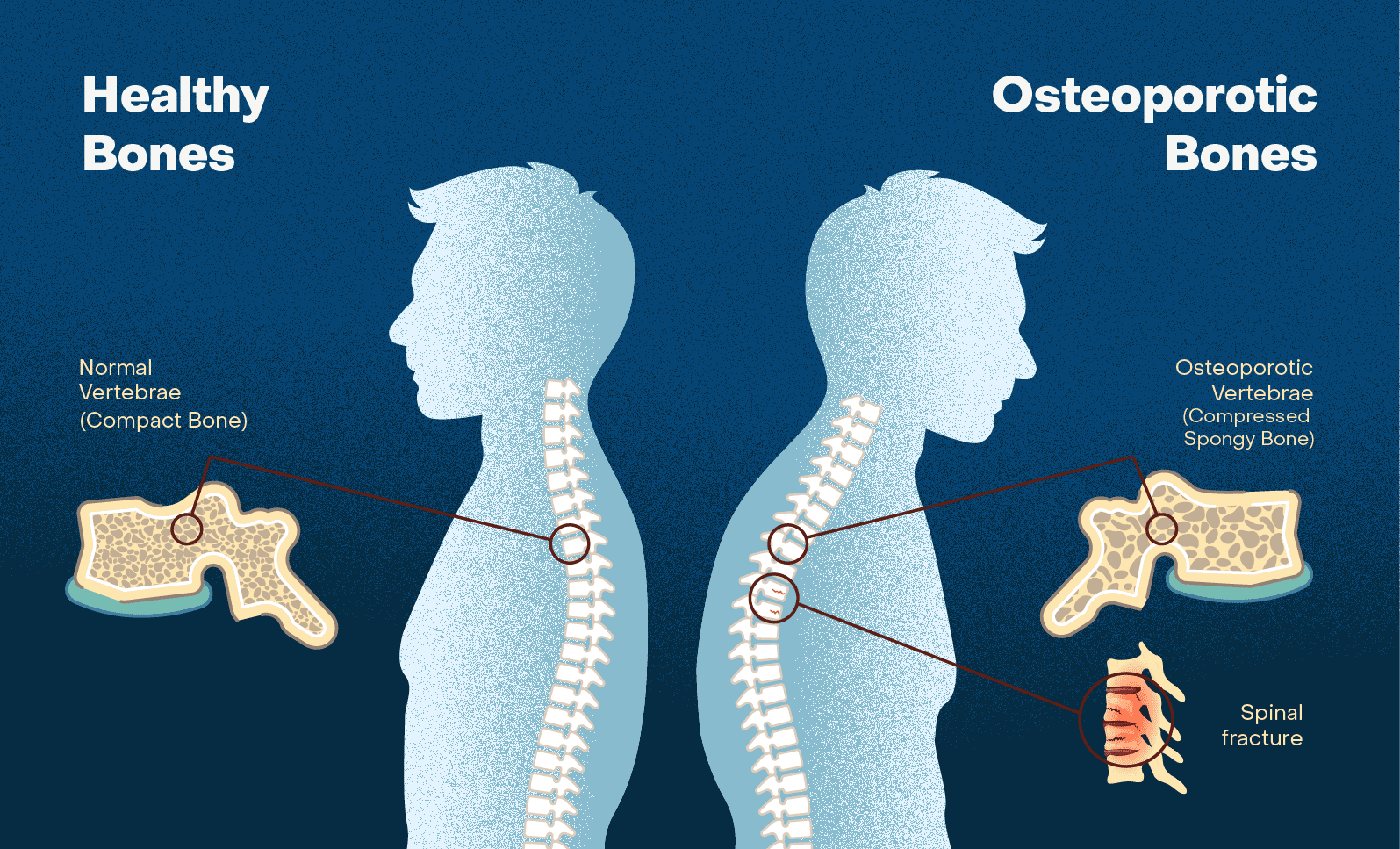
Osteoporosis
Pantoprazole Foods to Avoid
In order to maximize the effectiveness of pantoprazole and minimize any discomfort, individuals using this medication should steer clear of foods that may raise stomach acidity levels, including dishes, citrus fruits, and caffeinated drinks.
Pantoprazole Contraindications
It's important to note that pantoprazole should not be used in cases of pathological bleeding, or severe liver disease or when taking medications containing rilpivirine as it can greatly reduce the absorption and effectiveness of the latter.
Can I take pantoprazole in the morning and famotidine at night?
Certainly! It's common for people to take pantoprazole in the morning and famotidine at night to control acid levels for a period. Pantoprazole works slowly, lasts longer while famotidine acts faster. Remember it's essential to follow this schedule with advice, from a healthcare professional.
Special Precautions in Medication Administration
Some groups of people may need doses or specific precautions when using pantoprazole because of their unique risks and physical conditions.
Administration to the Elderly: Adjustments and Risks
Elderly individuals could potentially experience vulnerability to the overall impacts of pantoprazole like reduced bone density and difficulty absorbing nutrients. It is advisable to make adjustments, to their dosages and closely monitor them to reduce the risk of any consequences.
Administration to Pregnant Women and Nursing Mothers
During pregnancy Pantoprazole should only be taken when necessary weighing the advantages and drawbacks.
It's uncertain whether Pantoprazole passes into breast milk so its advisable to be cautious when giving it to nursing mothers.
Pantoprazole Nursing Considerations
Nursing care involves keeping an eye out for any effects handling interactions, between medications, and making sure the patient follows dietary advice to enhance the effectiveness and safety of treatment.
Pediatric Use: Safety and Efficacy
The long-term safety and efficacy of using pantoprazole in children has not been confirmed. It is generally deemed safe for short-term treatment when administered under supervision with doses tailored based on the childs age and weight.
Overdose Information
In the event of an excess intake of pantoprazole, it is crucial to seek immediate medical assistance to prevent any complications and safeguard the well-being of the patient.
Symptoms and Signs of Overdosage
Signs of taking too much pantoprazole may lead to;
- Feeling disoriented and acting strangely could be a sign of significant changes in electrolyte levels.
- Intense stomach issues like feeling queasy throwing up and having diarrhea.
- If the dosage is increased beyond limits, more severe signs, like feeling lightheaded and a fast heartbeat might show up.
Immediate Interventions and Treatments
In the event of an overdose of pantoprazole the usual approach involves;
- Providing care like replenishing fluids to address dehydration caused by gastrointestinal issues.
- Keeping an eye on signs and electrolyte levels to correct any imbalances.
- If the overdose is options such, as gastric lavage and administering activated charcoal may be contemplated within one hour of ingestion.
Handling and Storage of Pantoprazole
It is crucial to handle and store pantoprazole correctly to ensure its effectiveness and reduce safety hazards.
Optimal Storage Conditions
Remember to store Pantoprazole at room temperature from moisture and heat. Keep the packaging intact to shield it from light and contamination.
Disposal and Safety Precautions
Proper disposal of pantoprazole is important to prevent harm to the environment. Patients are encouraged to return any unused medication through designated programs or follow guidelines for safe disposal, at home without resorting to flushing or pouring down the drain unless directed otherwise.
Careful Administration Practices
Ensuring the administration of pantoprazole is crucial to optimize its effectiveness and reduce any possible dangers.
Guidelines for Hospital and Home Use
In hospitals and homes, it's important to follow these guidelines;
- Make sure the dosing is correct especially when transitioning between injectable medications.
- Teach patients and caregivers the times to administer medication, usually 30 minutes before meals, for the best results.

Taking medication
Monitoring Patient Response and Compliance
Continuous observation of how patients are reacting and following the treatment involves checking for symptom relief and potential side effects making changes, to the treatment plan as needed. It also includes scheduled check-ins to encourage patients to stick to their treatment routines and dietary recommendations.

